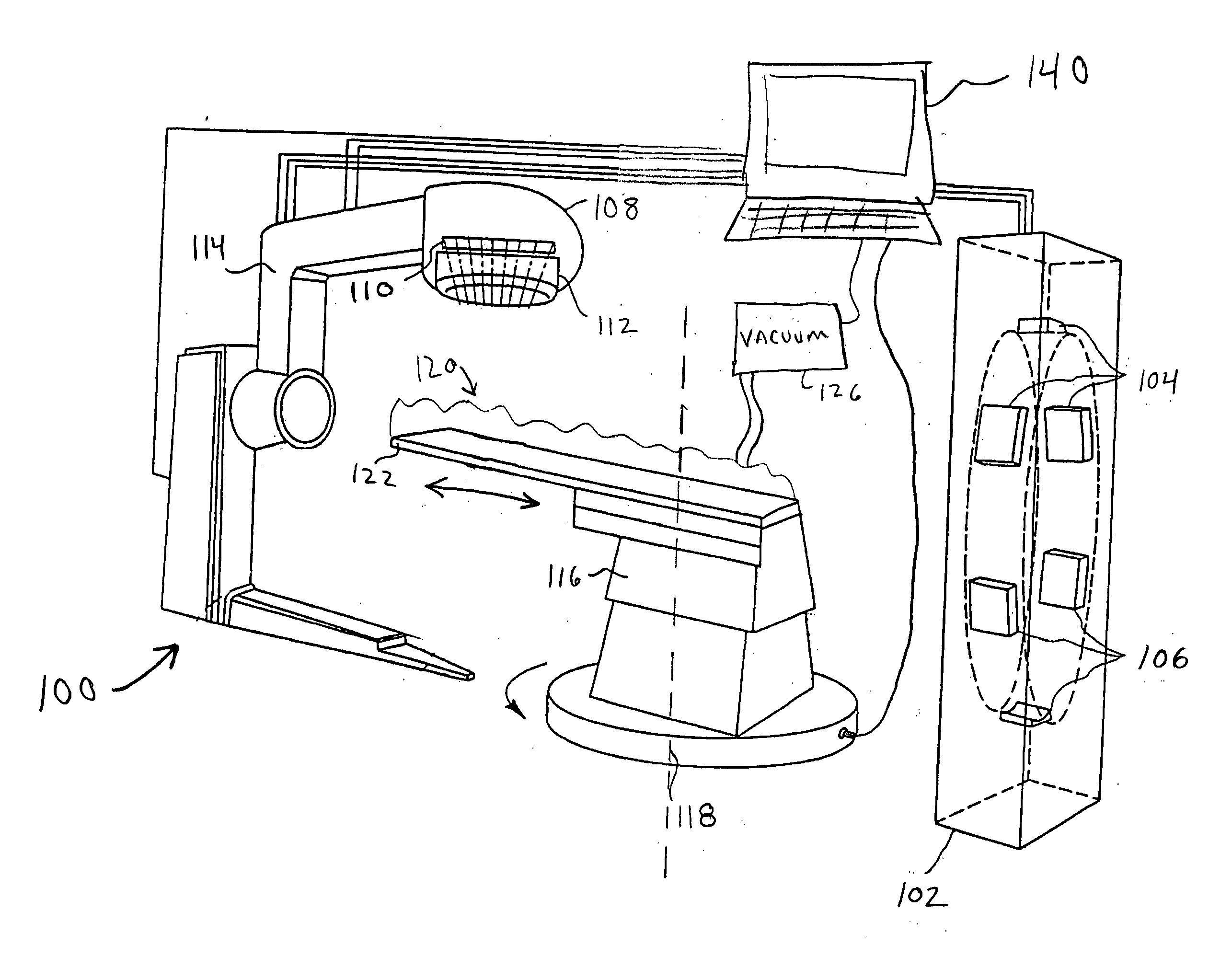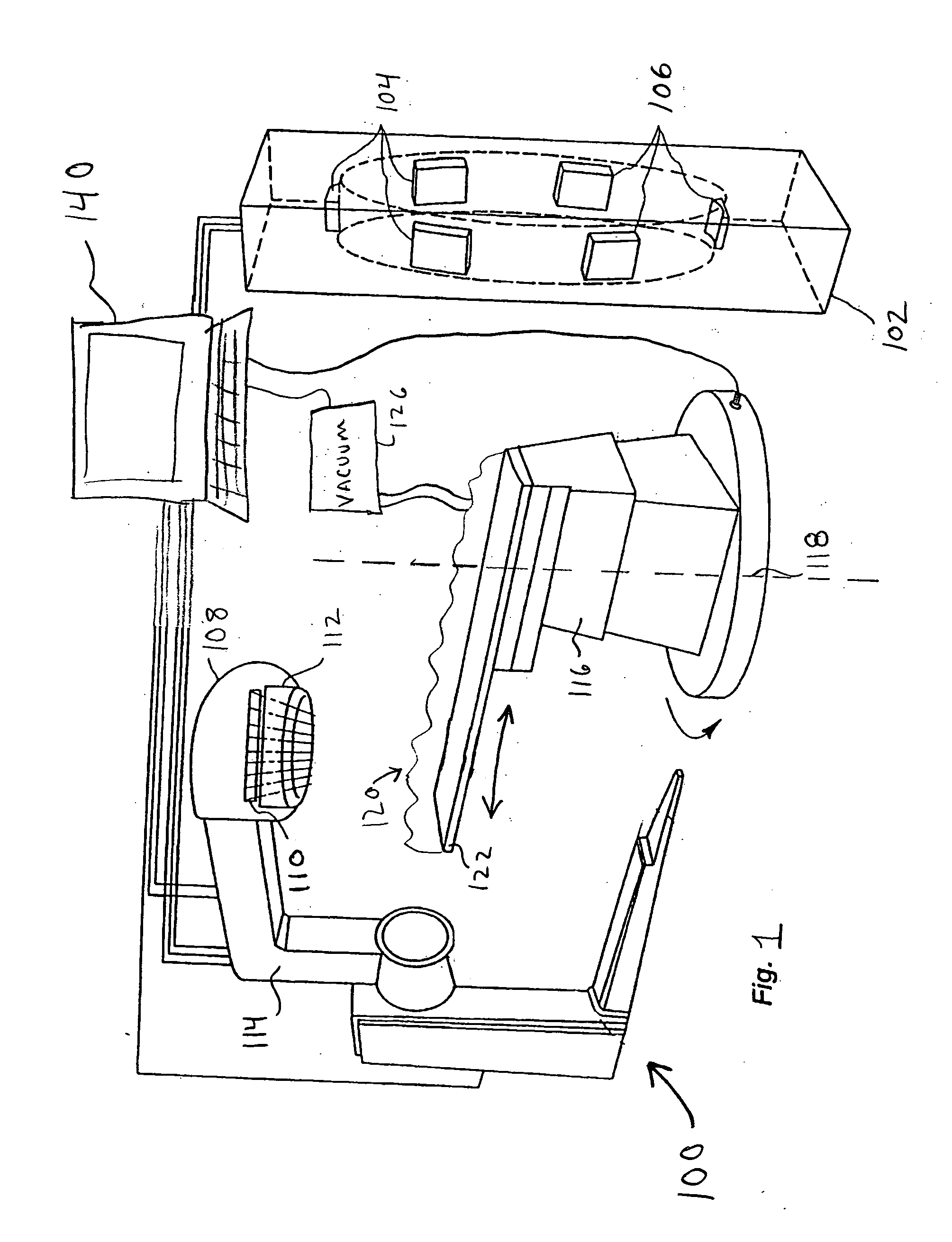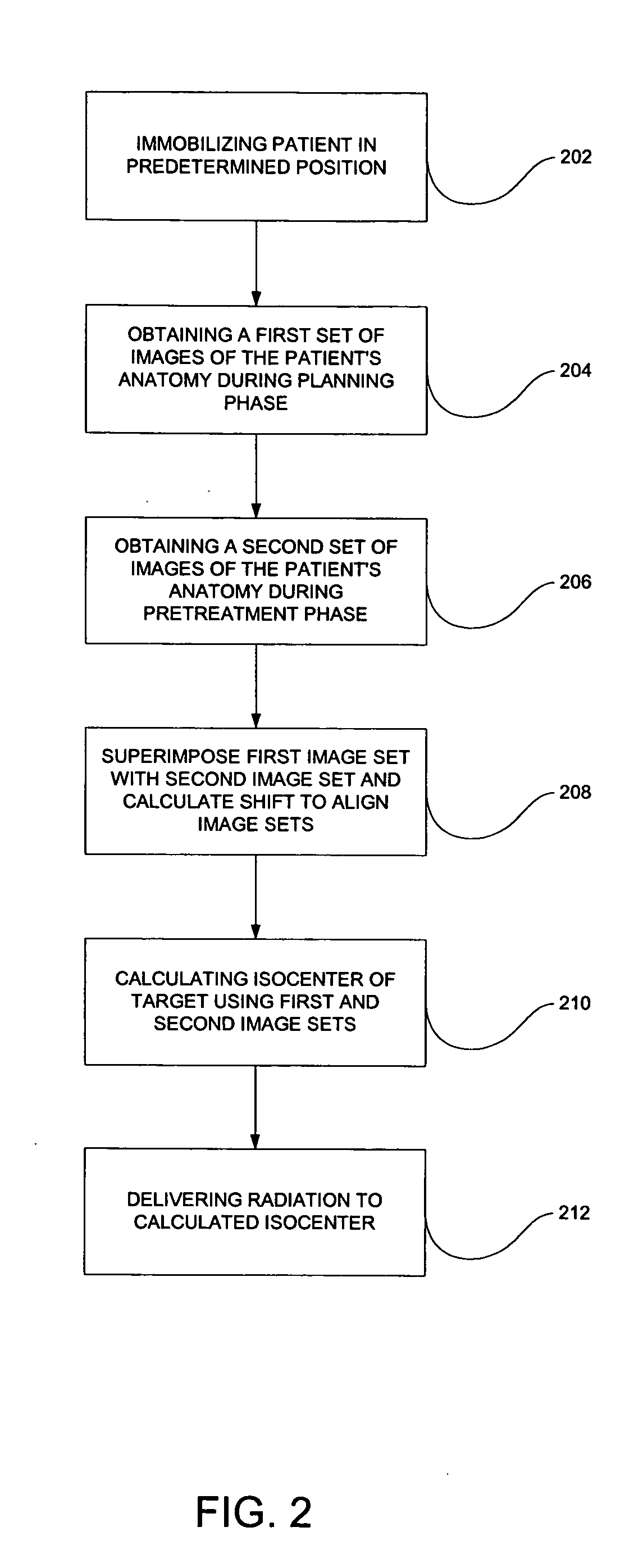Near simultaneous computed tomography image-guided stereotactic radiotherapy
a computed tomography and image-guided technology, applied in tomography, applications, therapy, etc., can solve the problems of inability to achieve re-irradiation of the spine using conventional techniques, re-irradiation of the spine is rarely possible using conventional techniques, and the implementation and delivery of extracranial stereotaxy can pose formidable challenges, so as to achieve a highly accurate dose of radiation and minimize body motion.
- Summary
- Abstract
- Description
- Claims
- Application Information
AI Technical Summary
Benefits of technology
Problems solved by technology
Method used
Image
Examples
Embodiment Construction
[0025] Embodiments of the present disclosure will be described herein below with reference to the accompanying drawings. In the following description, well-known functions or constructions are not described in detail to avoid obscuring the disclosure in unnecessary detail. In the figures, like reference numerals represent like elements.
[0026] A near simultaneous computed tomography (CT) image-guided stereotactic radiotherapy apparatus and technique are provided. A patient is immobilized in a stereotactic body frame system to minimize intra-treatment movement and vertebral body motion associated with breathing. The use of pretreatment daily CT scans in conjunction with planning CT scans enabled the apparatus to accurately target a tumor regardless of daily setup variations in patient position within the immobilization device. Although the following description describes a CT-on-rails system with a movable couch and stereotactic localizer, the present disclosure contemplates other sy...
PUM
 Login to View More
Login to View More Abstract
Description
Claims
Application Information
 Login to View More
Login to View More - R&D
- Intellectual Property
- Life Sciences
- Materials
- Tech Scout
- Unparalleled Data Quality
- Higher Quality Content
- 60% Fewer Hallucinations
Browse by: Latest US Patents, China's latest patents, Technical Efficacy Thesaurus, Application Domain, Technology Topic, Popular Technical Reports.
© 2025 PatSnap. All rights reserved.Legal|Privacy policy|Modern Slavery Act Transparency Statement|Sitemap|About US| Contact US: help@patsnap.com



